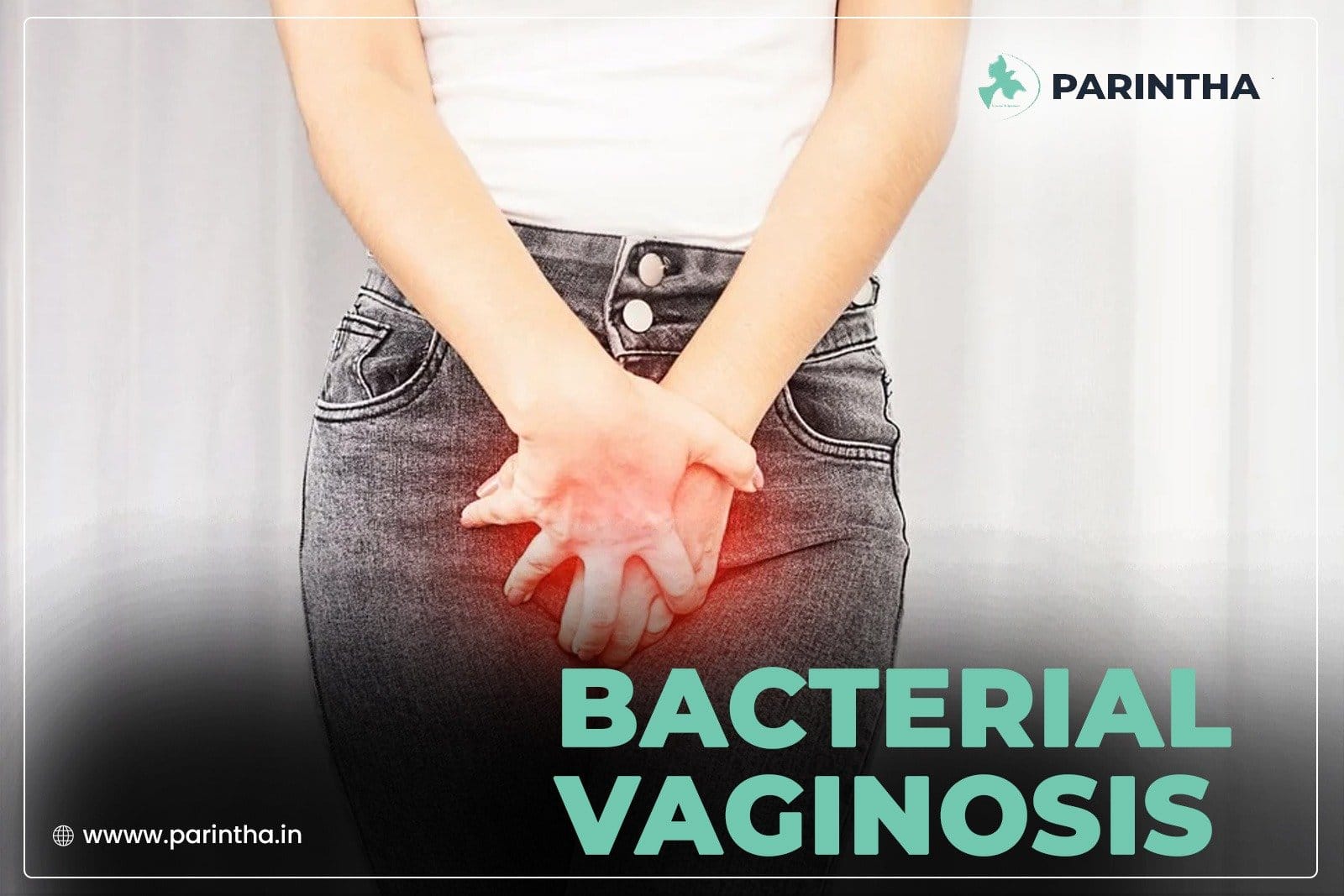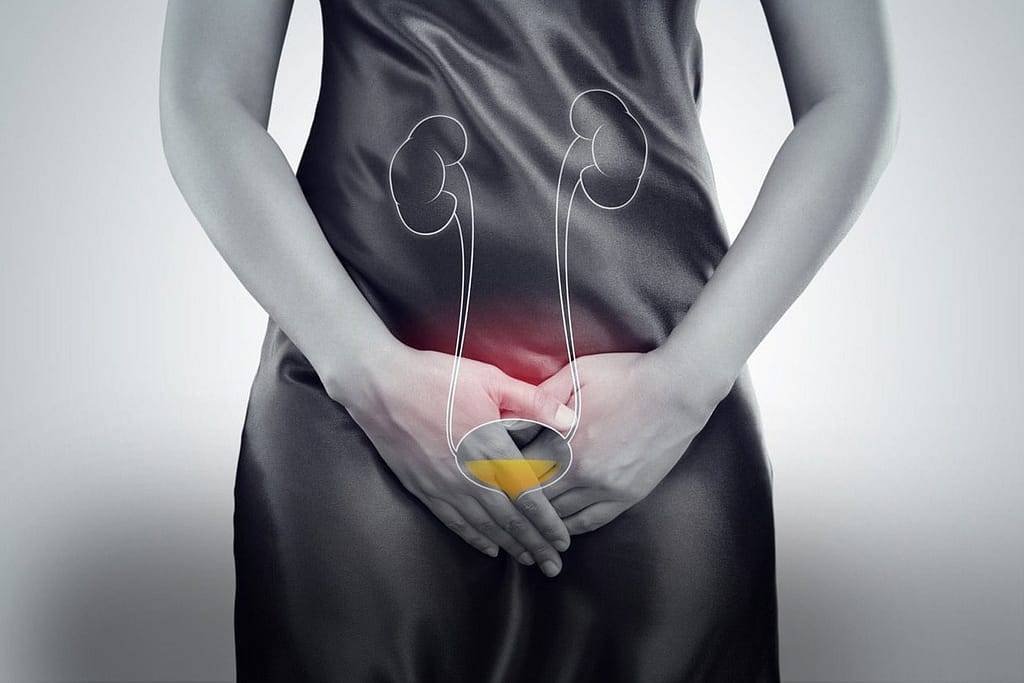
Bacterial Vaginosis is the most common cause of vaginitis in women, accounting for 40-50% of total cases, followed by yeast infection in 20-25% of women at least once in their lifetime, with both infections being the causes of vaginal odor.
Bacterial Vaginosis: Causes, Symptoms, and Prevalence
Bacterial Vaginosis (BV) is a common vaginal condition characterized by an imbalance in the normal vaginal flora:
Risk Factors – Socioeconomic factors, hygiene practices, and access to healthcare influence the incidence and contribute to the causes of vaginal odor. The vaginal flora is constantly changing and is influenced by many physiological and environmental factors.
Symptoms – include irritation, and sometimes burning with urination, together becoming the causes of white discharge with bad smell. Irritation usually occurs around and outside the vaginal introitus. Unlike other forms of vaginitis, Bacterial Vaginosis is not an inflammatory condition, so erythema, fissuring, and bleeding are typically not present. Bacterial Vaginosis is the most common cause of vaginitis in reproductive-aged women.
Prevalence – Vaginitis is a highly prevalent condition affecting millions of women annually. The prevalence varies with age, sexual activity, and hormonal status, with increased incidence noted in reproductive-aged women and during periods of hormonal change such as pregnancy and menopause. Bacterial Vaginosis is the most common cause of vaginitis in reproductive-aged women.
Causes – Bacterial Vaginosis is caused by a shift in normal vaginal flora, with lactobacilli being replaced by anaerobic bacteria such as Gardnerella vaginalis, Mycoplasma hominis, Mobiluncus, Bacteroides, Prevotella, Peptostreptococcus, Fusobacterium, and Porphyromonas.
Diagnosis and Treatment
Diagnosis of Bacterial Vaginosis is typically made using the Amsel criteria, which include the presence of thin, white discharge, clue cells on microscopy, a vaginal pH greater than 4.5, and a fishy odor with the application of potassium hydroxide. Gram stain is considered the diagnostic standard, although newer laboratory tests that detect Gardnerella vaginalis DNA or vaginal fluid sialidase activity have similar sensitivity and specificity.
Antibiotic treatment options for Bacterial Vaginosis include Metronidazole, Clindamycin, Tinidazole and Secnidazole.
For recurrent Bacterial Vaginosis, it is important to confirm the diagnosis again. Recurrences can be treated with the same regimen or one of the alternative regimens.
Causes (White Discharge Kyu Hota Hai)
Bacterial Vaginosis is caused by a disruption in the balance of the vaginal microbiota. Normally, the vaginal environment is dominated by lactobacilli, particularly Lactobacillus crispatus, Lactobacillus jensenii, and Lactobacillus gasseri. These beneficial bacteria play a crucial role in maintaining vaginal health by producing lactic acid, which keeps the vaginal pH acidic (around 3.5 to 4.5) and inhibits the growth of pathogenic microorganisms.

Shift in Vaginal Microbiota
A shift in vaginal microbiota occurs when the balance of microorganisms in the vagina is disrupted, often leading to conditions such as Bacterial Vaginosis.
- Reduction in Lactobacilli: Bacterial Vaginosis is characterized by a significant decrease in the population of lactobacilli. This reduction disrupts the normal acidic environment of the vagina, leading to an increase in vaginal pH above 4.5.
- Overgrowth of Anaerobic Bacteria: With the decline in lactobacilli, there is an overgrowth of anaerobic bacteria, including Gardnerella vaginalis, Atopobium vaginae, Mobiluncus spp., Bacteroides spp., Prevotella spp., Peptostreptococcus spp., Fusobacterium spp., and Porphyromonas spp. These bacteria are less sensitive to the acidic environment and proliferate when the pH increases.
- Biofilm Formation: Gardnerella vaginalis plays a pivotal role in the pathogenesis of Bacterial Vaginosis by forming a biofilm on the vaginal epithelium. This biofilm provides a protective environment for the bacteria, making them more resistant to the host’s immune responses and to antimicrobial treatments. The biofilm also creates an anaerobic environment that facilitates the growth of other anaerobic bacteria.
Clinical Considerations
A significant portion of Bacterial Vaginosis cases resolve without treatment and asymptomatic Gardnerella colonization does not typically require treatment. When there is distressing symptoms, oral or vaginal antibiotics are effective, with higher cure rates up to 90% within one month. However, recurrence is common, with rates as high as 80% within nine months of initial treatment.
Contributing Factors
Several factors contribute to the recurrence and persistence of Bacterial Vaginosis, including:
• Antibiotic Resistance: Studies have found resistance to both metronidazole and clindamycin among Gardnerella vaginalis strains.
• Biofilm Persistence: Gardnerella biofilms protect bacteria from antibiotics, contributing to recurrent infections.
• Failure to Recolonize with Lactobacilli: After antibiotic treatment, beneficial lactobacilli often fail to recolonize the vagina, leading to recurrence.
• Smoking: Smoking is a significant risk factor for Bacterial Vaginosis, with studies showing an association between smoking and reduced Lactobacillus dominance in vaginal microbiota.
• Contraceptive Methods: Non-hormonal copper intrauterine devices (IUDs) are associated with a higher prevalence of Bacterial Vaginosis compared to hormonal IUDs or other non-hormonal methods.
• Vaginal Douching: Douching can disrupt the vaginal microbiota and contribute to Bacterial Vaginosis by causing epithelial inflammation and hindering lactobacilli recolonization.
Despite the high prevalence of Bacterial Vaginosis and its impact on women’s health, current treatments have high recurrence rates and there are few effective alternative options. Ongoing research is exploring novel approaches such as diet and lifestyle changes, biofilm disruption, pH modulation, and vaginal microbiome transplantation to improve long-term outcomes for women with Bacterial Vaginosis.
Conclusion: Causes of Vaginal Odor
Bacterial Vaginosis is a common and recurrent condition that significantly affects women’s quality of life and reproductive health. While antibiotics are effective for initial treatment, recurrence rates are high, and there is a need for alternative treatments that provide long-term relief. Understanding the contributing factors and ongoing research efforts is crucial in developing more effective strategies for managing and preventing Bacterial Vaginosis.
StatPearls Publishing. 2024; Jan.
Am Fam Physician. 2018; 97(5): 321-329.
Front Reprod Health. 2023; 5: 1100029.
Am J Obstet Gynecol. 1988;158(4): 819-28.
Clin Infect Dis. 2022; 74(2): S144–S151.
Cureus. 2022; 14(11): e31314.
Front Cell Infect Microbiol. 2020; 24(10): 168.
